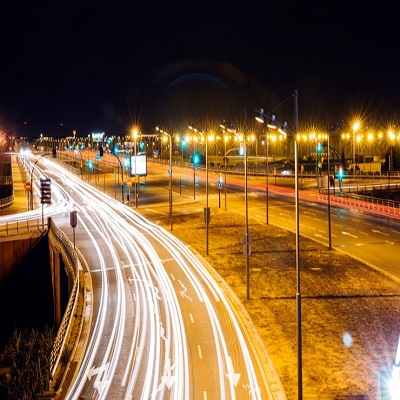Shedding Light on IoT: How Smart Technology is Revolutionizing Street Lighting
In today’s rapidly evolving technological landscape, the Internet of Things (IoT) has emerged as a game-changer in various industries, including urban infrastructure. One of the most impactful applications of IoT is the transformation of street lighting systems into smart, connected networks. This innovative approach to street lighting is revolutionizing urban landscapes, offering a multitude of benefits in terms of efficiency, safety, and sustainability.
Smart street lighting leverages IoT technology to create an interconnected network of lighting fixtures that can be monitored, controlled, and optimized remotely. By integrating sensors, wireless connectivity, and data analytics, these intelligent lighting systems can adapt to real-time conditions, leading to significant improvements in energy efficiency and cost savings.
One of the key advantages of smart street lighting is its ability to dynamically adjust lighting levels based on environmental factors such as ambient light, pedestrian and vehicular traffic, and weather conditions. This not only ensures optimal visibility and safety for road users but also minimizes energy consumption by dimming or brightening the lights as needed.
Moreover, IoT-enabled street lighting systems provide valuable data insights that empower city officials and maintenance teams to proactively address issues such as outages, malfunctions, and maintenance requirements. By remotely monitoring the performance of individual fixtures and detecting anomalies in real time, municipalities can streamline maintenance operations, reduce downtime, and enhance overall system reliability.
Beyond operational efficiency, smart street lighting contributes to the creation of safer and more secure urban environments. The ability to integrate motion sensors, surveillance cameras, and emergency response systems into lighting infrastructure enhances public safety by deterring crime, monitoring public spaces, and facilitating rapid emergency responses when needed.
Furthermore, the implementation of smart street lighting aligns with broader sustainability goals, as it enables cities to significantly reduce their carbon footprint and energy consumption. By optimizing lighting schedules, implementing energy-efficient LED fixtures, and leveraging advanced control algorithms, municipalities can achieve substantial energy savings while contributing to environmental conservation efforts.
The impact of IoT-driven street lighting extends beyond individual cities, as it plays a pivotal role in the development of smart, interconnected urban ecosystems. As cities continue to embrace the concept of smart cities, where various infrastructure elements are seamlessly integrated and optimized through IoT, smart street lighting serves as a foundational component in creating more livable, efficient, and sustainable urban environments.
In conclusion, the integration of IoT technology into street lighting systems represents a transformative shift in urban infrastructure management. By harnessing the power of connectivity, data analytics, and automation, smart street lighting delivers tangible benefits in terms of energy efficiency, safety, and sustainability, ultimately shaping the future of urban landscapes.
As cities worldwide embrace the potential of smart technology, the evolution of street lighting serves as a compelling example of how IoT is driving positive change and creating more connected, intelligent, and resilient urban environments.
